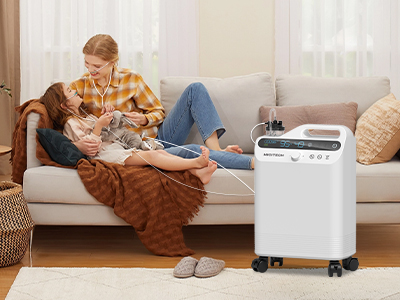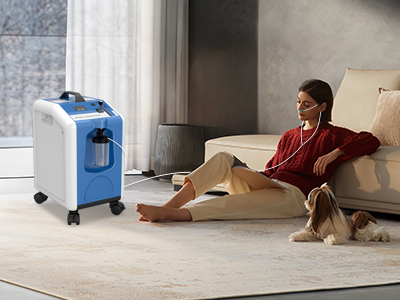01 Aug 2025
Few phrases can strike a mix of worry and determination in a parent’s heart quite like “Your child needs oxygen therapy.” Suddenly, you’re staring at tubing, machines, and a thousand new questions while also managing a kid who may not be thrilled about wearing anything that doesn’t involve cartoon characters or glitter.
But here’s the good news: children are astonishingly adaptable. With the right approach, oxygen therapy can shift from scary and strange to simply another part of their daily routine—like snack time or negotiating bedtime.

Understanding What Oxygen Therapy Means for Kids
Oxygen therapy isn’t a punishment; it’s a lifeline wrapped in plastic tubing. For children with conditions like asthma, chronic lung disease, or congenital heart issues, oxygen therapy ensures their growing bodies and busy brains get exactly what they need—enough oxygen to thrive.
Think of it this way: oxygen therapy doesn’t just help them breathe; it gives their bodies the energy to play, learn, and wage epic battles against homework with full lung capacity. It’s not restrictive; it’s restorative.
Starting the Conversation with Your Child
Honesty is the secret ingredient here—served with a side of creativity.
Keep it simple. Instead of explaining pulmonary gas exchange, say, “This helps your lungs feel strong.”
Make it fun. Let them name their oxygen concentrator. (Yes, "Sir Breathalot" is acceptable.)
Answer questions. Even the ones that seem endless. Curiosity is how kids build comfort.
Children fear the unknown. Once you turn oxygen therapy into a known quantity—maybe even a slightly silly one—it loses its scary edge.
Creating a Kid-Friendly Oxygen Setup
If your home feels like it suddenly sprouted hospital décor, it’s time for a makeover.
Pro Tips for a Happier Oxygen Space:
Colorful tubing covers: Transform boring medical gear into something rainbow-powered.
Personalized equipment: Stickers, decals, or even washable marker doodles turn machines into friendly robots.
Cozy therapy corner: A beanbag, soft blankets, and favorite toys make oxygen time feel less clinical and more like a VIP lounge.
Accessible storage: Keep extra cannulas and tubing in cheerful containers instead of ominous medical boxes.
A touch of whimsy can turn compliance into cooperation.
Overcoming Common Challenges
No matter how well-prepared you are, oxygen therapy comes with its own set of hurdles. Fortunately, most of them are solvable—and sometimes laughable in hindsight.
The Most Frequent Battles:
The Tug-of-War with Tubing: Kids run. Tubing does not. Invest in swivel connectors and cord clips to avoid Olympic-level tangling events.
Skin irritation: Use gentle padding around cannula points or switch to softer tubing. Bonus: less grumbling from your little oxygen enthusiast.
“I don’t want it!” moments: Turn oxygen sessions into rituals. Storytime plus oxygen? Now that’s a package deal.
Sibling curiosity: Explain the equipment and set clear boundaries—before someone decides the concentrator is a spaceship control panel.
Patience, humor, and a few clever hacks can turn most meltdowns into minor speed bumps.
Building Routines and Rewards
Structure is comforting for kids—and, let’s be honest, for parents too.
Set a schedule: Keep oxygen therapy times consistent, so it feels as normal as brushing teeth.
Use reward systems: Stickers, extra storytime, or small prizes make compliance feel like a win.
Celebrate progress: Even small victories (“Look, no complaints during oxygen today!”) deserve high-fives and maybe dessert.
Routine transforms oxygen therapy from an ordeal into a regular part of life—one your child might eventually manage with impressive independence.
Involving the Whole Family
Oxygen therapy doesn’t just involve one child—it affects the household dynamic.
Educate siblings: A quick “oxygen 101” prevents jealousy or accidental tugging of tubing.
Delegate tasks: Older kids can help fetch supplies or decorate the therapy space.
Stay positive: Children mirror your attitude. If you treat oxygen therapy as no big deal, they will too.
Family teamwork can turn medical care into a shared mission rather than a solitary struggle.

Working with Schools and Caregivers
Your child’s oxygen therapy needs won’t stop at your front door. Teachers, babysitters, and relatives need to be in the loop.
Create a care plan: Include equipment instructions, emergency contacts, and what to do if oxygen runs low.
Train caregivers: Demonstrate how to manage the machine and troubleshoot the basics.
Communicate early and often: The more confident other adults feel, the smoother the transition for your child.
A strong support network ensures your child’s oxygen therapy routine doesn’t skip a beat—even when you’re not there.
Encouraging Emotional Resilience
Beyond tubing and tanks, there’s the emotional side of oxygen therapy. Kids may feel different from their peers, and that difference can weigh heavily.
Normalize the experience: Show them books or videos with other children using oxygen.
Find role models: Online communities or support groups can help your child feel less “alone” in their oxygen journey.
Encourage ownership: Let them push buttons (the safe ones), carry their tubing, or help check equipment. Independence builds confidence.
When children see oxygen therapy as empowering rather than embarrassing, the adjustment becomes far easier.
Keywords: oxygen therapy
Originally published 01 Aug 2025, updated 01 Aug 2025.